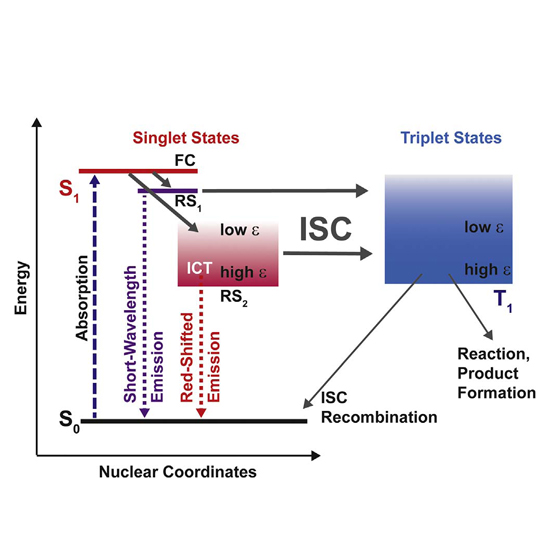Photophysics of diphenyl-pyrazole compounds in solutions and α-synuclein aggregates
19-Dec-2017
Biochimica et Biophysica Acta (BBA) - General Subjects, Volume 1862, Issue 4, Pages 800-807, https://doi.org/10.1016/j.bbagen.2017.12.007
Biochimica et Biophysica Acta, online article
Background
Recently diphenyl-pyrazole (DPP) compounds and especially anle138b were found to reduce the aggregation of α-synuclein or Tau protein in vitro as well as in a mouse model of neurodegenerative diseases [1,2]. Direct interaction of the DPPs with the fibrillar structure was identified by fluorescence spectroscopy. Thereby a strong dependence of the fluorescence on the surroundings could be identified [3].
Methods
Stationary and time-resolved emission experiments were performed on DPP compounds substituted by different halogens.
Results
The compounds reveal a pronounced dependence of the fluorescence on the surrounding solvent. In non-polar solvents they show strong emission in the blue part of the spectrum while in polar and proton donating solvents, such as water or acetic acid a dual fluorescence can be observed where a red-shifted emission points to a charge transfer in the excited state with large dipole moment. Non-radiative processes including photochemical reactions are observed for DPP substituted with heavy halogens. Upon binding of anle138b and its derivatives to protein fibrils in aqueous buffer, strong enhancement of the fluorescence at short wavelengths is found.
Conclusion
The investigations of the DPPs in different surroundings lead to a detailed model of the fluorescence characteristics. We propose a model for the binding in fibrils of different proteins, where the DPP is located in a hydrophobic groove independent of the specific sequence of the amino acids.
General significance
These investigations characterize the binding site of the DPP anle138b in protein aggregates and contribute to the understanding of the therapeutic mode of action of this compound.











